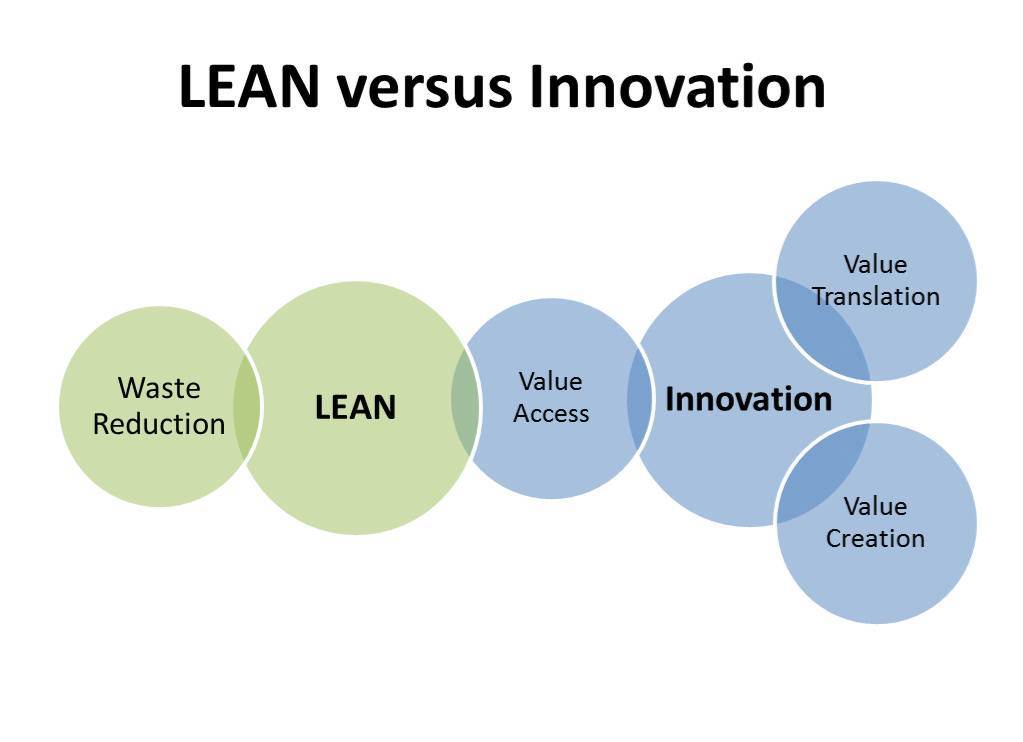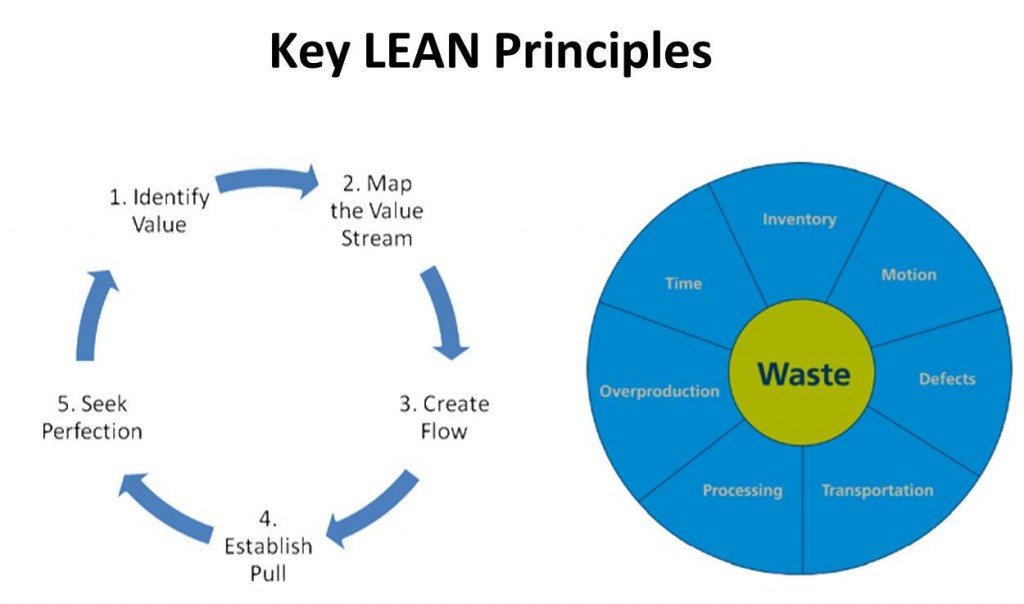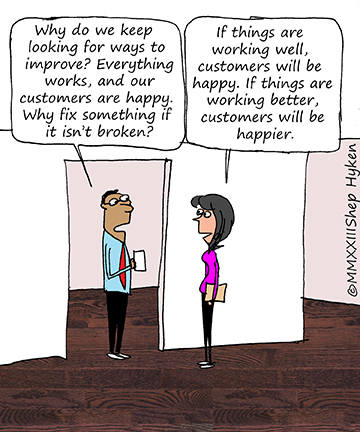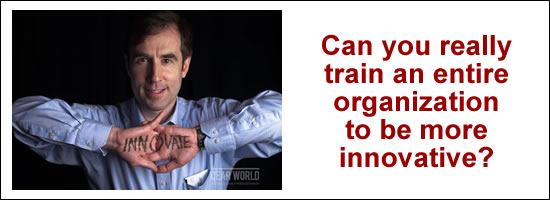 I’ve started working with a local healthcare insurance company in a role focused on driving improvement and innovation in its membership and billing operations. The company has a big focus on LEAN throughout the company and always has some sort of value stream mapping (VSM) or rapid process improvement workshop (RPIW) going on through the Kaizen Promotion Office (KPO). Despite this only being my second week on the job, I have already been involved in the company’s LEAN efforts. Having gone through Six Sigma Green Belt training and with my focus on innovation, this of course has been very interesting so far.
I’ve started working with a local healthcare insurance company in a role focused on driving improvement and innovation in its membership and billing operations. The company has a big focus on LEAN throughout the company and always has some sort of value stream mapping (VSM) or rapid process improvement workshop (RPIW) going on through the Kaizen Promotion Office (KPO). Despite this only being my second week on the job, I have already been involved in the company’s LEAN efforts. Having gone through Six Sigma Green Belt training and with my focus on innovation, this of course has been very interesting so far.
Some of you may recall my popular DMAIC for Innovation article for iSixSigma magazine.
In the spirit of the linkage I made between Six Sigma and Innovation in this article, I thought I would create a series of articles looking at the relationship and connections between LEAN and Innovation.
To anchor us all in the same frame of mind about what innovation is, my definition of the word is:
“Innovation transforms the useful seeds of invention into widely adopted solutions valued above every existing alternative.”
One of the key intersection points between LEAN and Innovation is that both are focused on value. LEAN focuses on activities in a process that add value and removing those that introduce waste, while innovation is focused on value creation, value access, and value translation. This I introduced in my often referenced article – Innovation is All About Value.
Innovation = Value Creation (x) Value Access (x) Value Translation
Now you will notice that the components are multiplicative not additive. Do one or two well and one poorly and it doesn’t necessarily add up to a positive result. Doing one poorly and two well can still doom your innovation investment to failure. Let’s look at the three equation components in brief:
Value Creation is pretty self-explanatory. Your innovation investment must create incremental or completely new value large enough to overcome the switching costs of moving to your new solution from the old solution (including the ‘Do Nothing Solution’). New value can be created by making something more efficient, more effective, possible that wasn’t possible before, or create new psychological or emotional benefits.
Value Access could also be thought of as friction reduction. How easy do you make it for customers and consumers to access the value you’ve created. How well has the product or service been designed to allow people to access the value easily? How easy is it for the solution to be created? How easy is it for people to do business with you?
Value Translation is all about helping people understand the value you’ve created and how it fits into their lives. Value translation is also about understanding where on a continuum between the need for explanation and education that your solution falls. Incremental innovations can usually just be explained to people because they anchor to something they already understand, but radical or disruptive innovations inevitably require some level of education (often far in advance of the launch).
Done really well, value translation also helps to communicate how easy it will be for customers and consumers to exchange their old solution for the new solution. My favorite example of poor value translation and brilliant value translation come from the same company and the same product launch – The Apple iPad. It’s hard to believe, but Apple actually announced the iPad with the following statement:
“Our most advanced technology in a magical and revolutionary device at an unbelievable price.”
 This set off a firestorm of criticism and put the launch at risk of failure. But amazingly Apple managed to come up with the Out of Home (OOH) advertisements with a person with their feet up on a couch and the iPad on their lap (see above) by the time the product shipping. If a picture is worth a thousand words, this particular picture will probably end up being worth billions of dollars to Apple.
This set off a firestorm of criticism and put the launch at risk of failure. But amazingly Apple managed to come up with the Out of Home (OOH) advertisements with a person with their feet up on a couch and the iPad on their lap (see above) by the time the product shipping. If a picture is worth a thousand words, this particular picture will probably end up being worth billions of dollars to Apple.
Never Forget!
Value Creation is important, but you can’t succeed without equal attention being paid to both Value Access and Value Translation…
Because innovation is all about value…
Value Creation (x) Value Access (x) Value Translation = Success!

The graphic above highlights that LEAN and Innovation intersect on Value Access. Now let’s have a quick look at some of the key principles of LEAN from the web site of the Lean Enterprise Institute:
PRINCIPLES OF LEAN
The five-step thought process for guiding the implementation of lean techniques is easy to remember, but not always easy to achieve:
- Specify value from the standpoint of the end customer by product family.
- Identify all the steps in the value stream for each product family, eliminating whenever possible those steps that do not create value.
- Make the value-creating steps occur in tight sequence so the product will flow smoothly toward the customer.
- As flow is introduced, let customers pull value from the next upstream activity.
- As value is specified, value streams are identified, wasted steps are removed, and flow and pull are introduced, begin the process again and continue it until a state of perfection is reached in which perfect value is created with no waste.

The second part of the above graphic highlights the seven sources of waste:
- Inventory
- Motion
- Defects
- Transportation
- Processing
- Overproduction
- Time
While developed for the manufacturing context, LEAN can be (and is) used in service industries like health insurance as well. As you can see, LEAN is really focused on improvement and optimization of the status quo, while innovation in contrast is focused on the introduction of something new that disrupts the status quo. As a result, one is not better than the other, but instead both methodologies can be used side by side, and in future articles I will share more of my musings on how innovation and LEAN can be used together.
Stay tuned!

 Sign up here to get Human-Centered Change & Innovation Weekly delivered to your inbox every week.
Sign up here to get Human-Centered Change & Innovation Weekly delivered to your inbox every week.


![]() Sign up here to join 17,000+ leaders getting Human-Centered Change & Innovation Weekly delivered to their inbox every week.
Sign up here to join 17,000+ leaders getting Human-Centered Change & Innovation Weekly delivered to their inbox every week. I’ve started working with a
I’ve started working with a  This set off a firestorm of criticism and put the launch at risk of failure. But amazingly Apple managed to come up with the Out of Home (OOH) advertisements with a person with their feet up on a couch and the iPad on their lap (see above) by the time the product shipping. If a picture is worth a thousand words, this particular picture will probably end up being worth billions of dollars to Apple.
This set off a firestorm of criticism and put the launch at risk of failure. But amazingly Apple managed to come up with the Out of Home (OOH) advertisements with a person with their feet up on a couch and the iPad on their lap (see above) by the time the product shipping. If a picture is worth a thousand words, this particular picture will probably end up being worth billions of dollars to Apple.


 Innovation is everywhere. Or at least the word is. CEOs talk about innovation, every technology company claims to be innovative (or to want innovative employees) and now we’re even seeing advertisements on television talk about innovation. Even Nissan, which has had innovation in their tagline for two years now, has decided to change their tagline from “Innovation for All” to something new “Innovation that Excites.” Okay, it still has innovation in it. But, the fact that they decided to move from innovation being something that is democratic, to something that is exciting, is an interesting shift. Maybe now that everybody is claiming to be innovative they felt the need to say, “No, our innovations aren’t like everyone else’s, our innovations are exciting!”
Innovation is everywhere. Or at least the word is. CEOs talk about innovation, every technology company claims to be innovative (or to want innovative employees) and now we’re even seeing advertisements on television talk about innovation. Even Nissan, which has had innovation in their tagline for two years now, has decided to change their tagline from “Innovation for All” to something new “Innovation that Excites.” Okay, it still has innovation in it. But, the fact that they decided to move from innovation being something that is democratic, to something that is exciting, is an interesting shift. Maybe now that everybody is claiming to be innovative they felt the need to say, “No, our innovations aren’t like everyone else’s, our innovations are exciting!”
 OK, it may not really be an innovation, but I appreciated the following operational efficiency anyway:
OK, it may not really be an innovation, but I appreciated the following operational efficiency anyway: